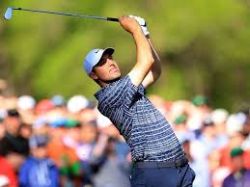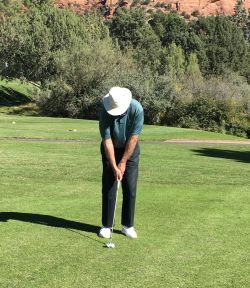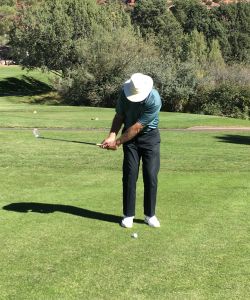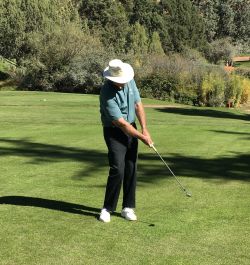Welcome to Earl's Golf Blog
November 6,2025Basic Short Wedge Pitch and a bit more
 PGA touring professionals are exceptional at every facet of the game, but one trait above all others is essential to sustaining success throughout their careers: the short game around the greens. You can't reach the PGA Tour without being a solid ball striker and a good putter—but to stay among the elite and enjoy longevity, you must have a stellar wedge game.
PGA touring professionals are exceptional at every facet of the game, but one trait above all others is essential to sustaining success throughout their careers: the short game around the greens. You can't reach the PGA Tour without being a solid ball striker and a good putter—but to stay among the elite and enjoy longevity, you must have a stellar wedge game.
The average player has no idea how good Scottie Scheffler is with a wedge in his hands. We're impressed with 350-yard drives, but the real artistry lies in how close he hits those finesse wedge shots to gimme range. The average Tour professional hits about 13 greens in regulation per round, which means he faces about five delicate short shots that must be executed perfectly to save par. Add in the "up and downs" on par fives and approach shots inside 100 yards, and the importance of mastering the wedge becomes undeniable.
Paul Runyan, one of the greats of the 1930s and '40s, was renowned for his excellence around the greens. I had the privilege of attending a PGA seminar with Mr. Runyan at Houston Country Club in 1980, where he shared his wisdom for three days. Much of the instruction took place on the course and focused on how to make subtle adjustments to control ball flight and spin. One statement of his still amazes me today: he said he had at least a hundred different ways to play a simple, straightforward 20- to 40-yard pitch or chip shot. He demonstrated varying heights, spins, hooks, slices, and club selections—never leaving a ball more than five feet from the hole and holing out an astonishing number of times.
Let's talk basics, because all those variations stem from a solid foundation. Take a 20-yard level shot with plenty of green to work with, using a 56-degree sand wedge. Stand erect with your feet relatively close together and a little more weight on your front foot. Position the ball in the center, with the shaft straight up or slightly leaning forward. The body's movement matches the shot's length: quiet on short shots, turning more as the swing lengthens. The backswing creates the energy for the shot—once you've taken the club back far enough to produce the desired distance, simply swing it along the path back to the ball and let it stop naturally after impact. The backswing will generally be longer than the follow-through. There's no need to force acceleration—doing so kills feel, and feel is everything in finesse shots. Mr. Runyan said, "It's like letting the club drop and therefore using gravity to swing it back to the ball."
This is just one of the hundreds of ways to play a wedge shot around the green, but these fundamentals apply to at least 75% of the shots most amateurs will face.



Now for the fun part. Once the fundamentals are in place, start expanding your shot repertoire. Begin with the basic 56-degree sand wedge from 20 yards. Experiment with different ball positions—forward, back, slightly open face, half open face—and with various clubs. Observe how trajectory and spin change with each adjustment. With a bit of practice, you'll find a reliable, comfortable shot you can trust. Then expand the distances, remembering this rule: the length of your backswing creates the power. Follow that rule, and you'll develop a confident short game that can shave strokes off your scorecard.



